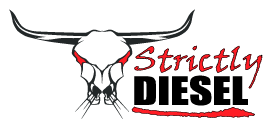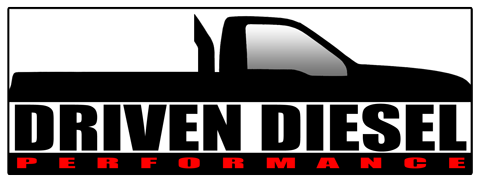 NOTE: Articles in this series were written in an order that might make "skipping around" confusing. If you didn't start at the beginning, you might want to CLICK HERE.
NOTE: Articles in this series were written in an order that might make "skipping around" confusing. If you didn't start at the beginning, you might want to CLICK HERE.In the introductory discussion, I mentioned that the fuel injectors went from "Single Shots" to "Split Shots" with the release of the 1999 Super Duty. This wasn't the only fuel system change from the 94.5-98 "OBS" configuration. The 99+ Super Duty also brought us an electric lift pump, replacing the 2-stage mechanical fuel pump in the engine valley. The single stage electric fuel system runs at full pressure, necessitating a different fuel filter housing, regulator and fuel plumbing configuration, which can be seen by studying the differences in the two "stock" flow diagrams below.
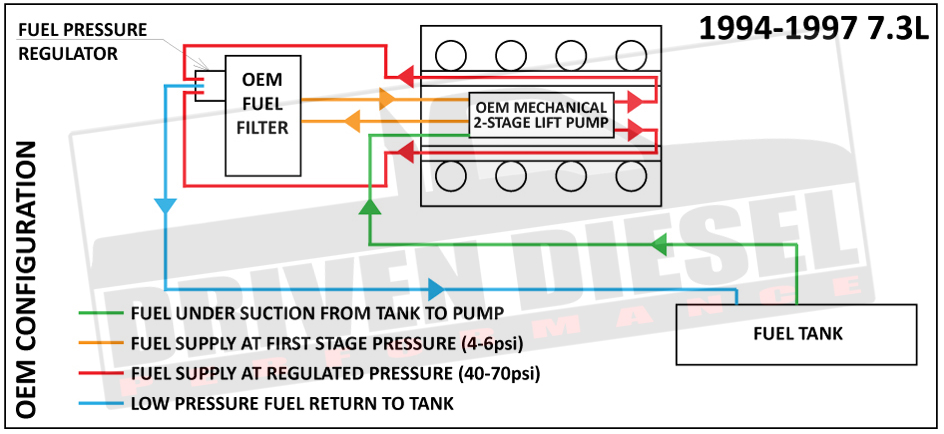
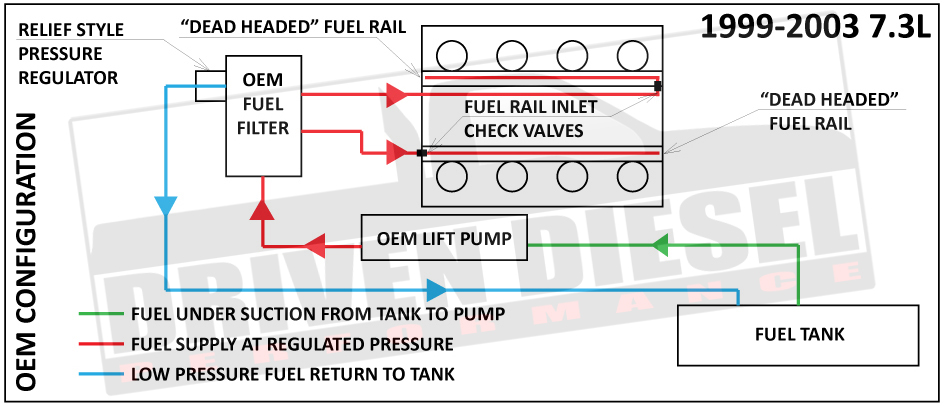
If you follow the OEM fuel flow on the 94.5-98 "OBS" diagram, you will see that the fuel flows as follows:
• Fuel Tank to Mechanical Pump (under suction)
• Mechanical Pump to Fuel Filter (low pressure stage)
• Fuel Filter back to Mechanical Pump (low pressure stage)
• Mechanical Pump to Cylinder Head Fuel Rails (high pressure stage)
• Cylinder Head Fuel Rails to Fuel Pressure Regulator (high pressure stage)
• Fuel Pressure Regulator back to Fuel Tank (flow varies by regulator opening)
Due to the fact that the fuel pressure regulator is located AFTER the fuel rails in the cylinder heads, on the RETURN side of the fuel system, the OEM fuel system in the 94.5-98 "OBS" trucks would be considered a REGULATED RETURN style system.
DIAGRAM NOTE: the second fuel tank and fuel tank selector valve were intentionally left out of the "OBS" diagram because they don't serve any purpose in this discussion.
Looking at the OEM fuel flow on the 99-03 "Super Duty" diagram, you will see that the fuel flow has changed to:
• Fuel Tank to OEM Lift Pump (under suction)
• OEM Lift Pump to Fuel Filter (full system pressure)
• Fuel Flow Splits at the Fuel Filter as follows:
• PATH 1 : Fuel Filter to Cylinder Head Fuel Rails (full system pressure*)
• Fuel Deadheads in Fuel Rails Until Consumed by Injectors
• PATH 2 : Fuel Pressure Regulator back to Fuel Tank (flow varies by regulator opening)
In the 99-03 "Super Duty" fuel system, the fuel pressure regulator is located in the fuel flow path between the fuel pump and the fuel rails in the heads. This means that the pressure regulator is managing SUPPLY pressure, not return pressure. As such, I would refer to this as a REGULATED SUPPLY style system.
SO WHAT'S THE BIG DEAL?
While both the "OBS" and "Super Duty" fuel system designs result in pressurized fuel making it to the fuel injectors via the fuel rails in the heads, the latter design coupled with the new "Split Shot" fuel injectors resulted in the now infamous 7.3L "Cackle" noise. This new "Cackle" noise was noticeable enough to drive customers to their dealerships with complaints, and repeatable enough for Ford to actually address the problem by changing a single fuel injector in the #8 cylinder in an attempt (failed) to make customers happy and make the noise go away. It also caused a bunch of us on the internet forums to spend a lot of time trying different fuel system setups in search of a cure. In the next 2 articles I will cover the 3 main fuel system designs that we tested, the key differences between them (pros and cons) and why we chose the design we still use today...20 years later.
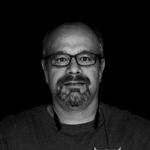
Author: Dennis Schroeder - Co-Owner of Strictly Diesel
Dennis has been Designing, Building and Supporting Aftermarket Fuel Systems for 7.3L and 6.0L Powerstrokes since 2001.
